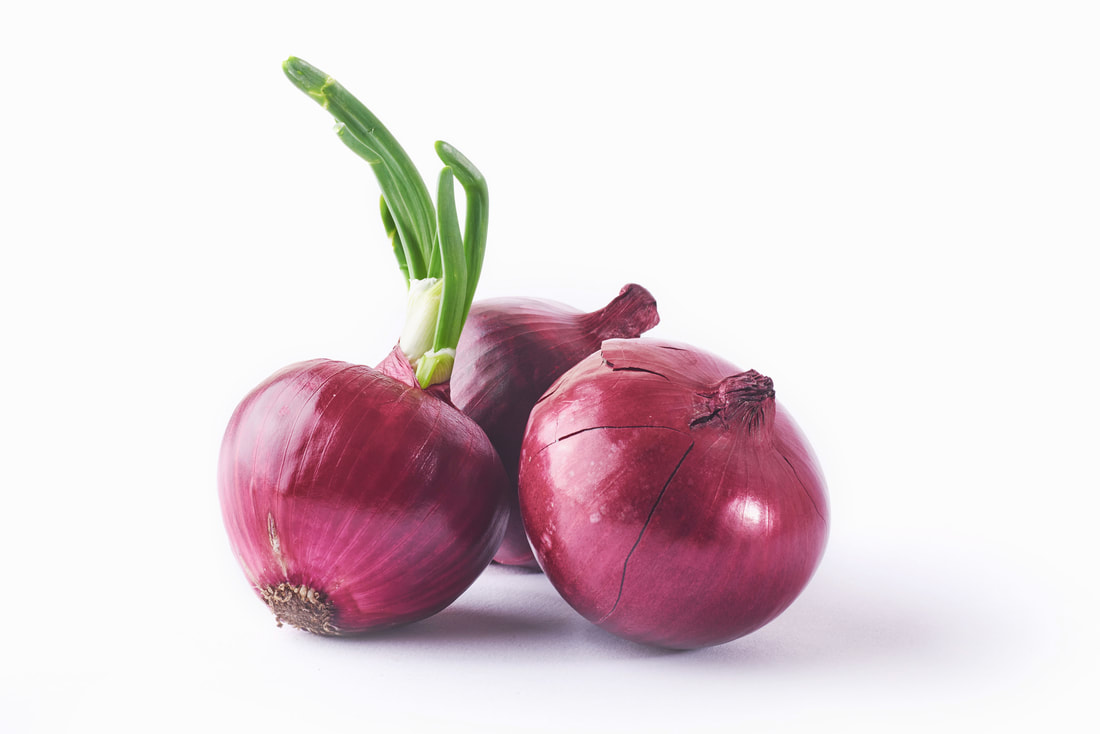|
Did you know your hormones affect your urinary tract and vaginal health?* Before menopause, your hormones rise and fall with your menstrual cycle, causing you to be more likely to develop an imbalance in your vaginal microbiome in the two weeks following the beginning of your period.1 Additionally, the hormonal shifts that come with perimenopause and menopause also affect urinary tract comfort.2 As well, disruption to your hormone levels may also cause a range of symptoms like PMS;3 heavy or light periods;3 tender or swollen breasts;4 weight gain around the butt, hips, waist, and back of arms;5-7 low mood; anxiousness; fatigue;7 and reduced libido.7 Here are some foods to eat and others to avoid to help keep your hormones in harmony: Another way to ensure you’re getting the nutrients you need to support your health is to add supplements like Wellness Essentials® Women or Wellness Essentials Women’s Prime to your daily regimen.
For additional urinary tract and vaginal health, consider taking a probiotic specific to urinary tract and vaginal health.* References
0 Comments
By Monazza Ahmad, B.Pharm, MSc To ensure best health outcomes in a healthcare setting, it is important to establish open, effective, and respectful communication between a patient and a healthcare practitioner. As a patient, it is not only your right but in your best interest to ask your doctor for clarification or further explanation on your health condition and treatment plan. As a healthcare provider, it is your responsibility to provide a safe and comfortable environment for your patients to openly discuss their health concerns and make sure your diagnosis and treatment plan is well understood. That said, menopause can trigger many complex and confusing symptoms that can be uncomfortable to talk about, which can make managing the symptoms difficult. When should I talk to my doctor about menopause?1 First of all, don’t feel awkward. Menopause is a natural phase of life, and your doctor is likely familiar with all possible symptoms. Describe your condition and symptoms in detail and explain how they are affecting your lifestyle and relationships. The provider needs to rule out any other underlying conditions before determining it is menopause. Reach out to your doctor if:
Don’t forget to tell your doctor if you have any allergies or other health conditions. Also mention any medications or supplements you’re already taking for menopause symptoms or other conditions. What shall I ask my doctor? Medical appointments can be stressful, and we often feel rushed. When you have a delicate issue to bring up, being prepared can help. Here are some of the questions you can ask your practitioner:
How can healthcare providers ensure the right care during menopause? Often, the reluctance from healthcare professionals to address these female issues can also cause lack of awareness. It is the healthcare provider’s obligation to make sure patients feel comfortable in discussing their menopausal concerns and understand the treatment plan.2 According to a survey by NIH, patients are likely to discuss menopause transition with providers who don’t make them feel rushed, are good listeners, and have expertise in this area of women’s health. Here are some ways to help your patients receive the best care:
What to ask your patients:3
The menopausal rating scale and symptoms evaluation form can be used to track symptom improvement to see what treatment options are working:4,5 Menopause symptoms evaluation form and rating scale (click to enlarge)Menopause is a natural phase in a woman’s life, and its challenges need to be accepted and understood at work, at home, and on a social as well as a societal level. Unless these concerns are progressively communicated in a healthcare setting, it will be tough for us to understand the impact of this condition on a woman’s life.
References:
Glyphosate, first registered for use in the United States in 1974, is an herbicide widely used to kill broadleaf weeds and grasses and regulate the growth of certain plants.1,2 It is employed in agriculture, forestry, in lawn and garden maintenance, and for weed control in industrial areas.1
The use of glyphosate has skyrocketed since 1997, after crops genetically modified to tolerate glyphosate were first introduced.3 The broad usage has led to questions of whether glyphosate remains present in the food we eat and water we drink, as well as whether it is safe for humans to consume. Because glyphosate binds so tightly to soil particles after use, it is believed to be prevented from entering groundwater.4 However, this may not be the case. During a 2002 study of waterways in nine Midwestern states, glyphosate was detected in 36% of the 154 samples taken, although the highest measured concentration was still well below the maximum contaminant level (set by the Environmental Protection Agency) of 700 micrograms per liter.3 And in one study of an agricultural community in Mexico, glyphosate was detected in both groundwater and bottled water.5 Due to its lack of quick degradation in plants, glyphosate residue could be present in the food supply.4 In tests performed by researchers and consumer watch groups, glyphosate has been detected in a number of foods, including bread, honey, oat-based cereals, granolas, and snack bars.6,7 Common means of glyphosate exposure Pure glyphosate is said to be low in toxicity, but it is often mixed with other ingredients that can make the resulting product more toxic.1 Directions for applying glyphosate usually caution users to wear gloves and eye protection to avoid skin and eye irritation and to be careful not to breathe the compound to protect against nose and throat irritation.1 Although it isn’t easy for glyphosate to pass through the skin into the body, it is possible to ingest glyphosate by breathing it in while spraying or by eating or smoking after applying, without first washing your hands.1 When absorbed or ingested, most glyphosate tends to remain unchanged and leaves the body pretty quickly in urine or excrement.1 Despite that, swallowing glyphosate-containing products can result in nausea, vomiting, diarrhea, and burns in the mouth and throat.1 Intentional ingestion has resulted in fatalities in some cases.1 Because glyphosate products often contain additional chemicals, it can be hard to determine whether glyphosate alone is responsible for the adverse symptoms observed when humans come into contact with it.8 For instance, some studies suggest that the surfactant polyoxyethyleneamine used with glyphosate is more toxic than glyphosate alone.8 Agency opinions and glyphosate research Consensus on risks associated with glyphosate exposure has been tough to pin down. In April 2019, the US Environmental Protection Agency stated it “continues to find [glyphosate] poses no risk to public health when used as labeled and that it is not a carcinogen.”2 This follows a similar declaration by the European Food Safety Authority in 2015 that glyphosate is unlikely to be a carcinogen in humans.9 By contrast, the World Health Organization’s International Agency for Research on Cancer (IARC) stated in March 2015 that it had analyzed the results of over 1,000 studies and determined that glyphosate was possibly carcinogenic to humans.10 In an updated monograph released one year later, the IARC attributed the difference between its statement and the findings of other agencies to the source material, noting that most regulatory agencies reviewed nonpublic industry data from toxicological studies.10 Still, research into glyphosate’s possible carcinogenic effects continues. A recent analysis of human epidemiological studies confirmed a link between glyphosate exposure and an increased risk for non-Hodgkin’s lymphoma.11 And in another lab study, glyphosate was shown to stimulate the growth of a certain type of hormone-dependent breast cancer in cells by acting on estrogen receptors, indicating it may be an endocrine disruptor.12 Researchers are also investigating glyphosate’s impact on the human reproductive system. In one study, exposure to glyphosate-based herbicides below the toxicity threshold decreased the activity of aromatase, a key enzyme in balancing sex hormones.13 Another study in prepubertal male rats showed a decrease in testosterone levels in those given soy milk supplemented with glyphosate.14 And results of a study in pregnant mice indicate that glyphosate can cause the ovaries to fail and interfere with secretion of hormones.15 There have been cases of accidental exposure to concentrated glyphosate solutions causing neurological lesions, suggesting glyphosate could be neurotoxic in high doses.16 In a model of the blood-brain barrier, researchers observed that a high dose of glyphosate resulted in neurological damage and altered metabolism of glucose.16 Glyphosate and antibiotic resistance Recent research has uncovered a worrisome link between glyphosate use and the growing problem of antibiotic resistance.17,18 It is believed the use of glyphosate is leading to changes in microbiome composition and, as a result, increases in resistance to critical antibiotics.17 Researchers note that when bacteria are exposed to non-antibiotic chemicals such as herbicides, they can be inclined to develop resistance to antibiotics more rapidly: in some cases, 100,000 times faster.18 Looking to avoid glyphosate? The Detox Project offers Glyphosate Residue Free and Gold Standard Detox certification to bring a new era of transparency to the food and supplement industries. References:
Onions are an overlooked vegetable. Whether they’re being sautéed for a soup, sliced for a burger, or pickled for a salad, onions rarely steal the show of a meal, although they often inspire a sob story.
Onions are most known for their pungent flavor, not necessarily their nutritional value. Their white flesh (even in red onions) isn’t always perceived as being as nutritious as vibrantly colored vegetables like kale, broccoli, or beets. But that’s no reason to snub onions. Although some onion varieties are lacking in color, onions in general are one of the highest natural sources of a powerful flavonoid: quercetin.1 What is quercetin? Quercetin is a flavonoid, which is a chemical compound found in plants. In addition to onions, quercetin is also found in many other fruits and vegetables like capers, asparagus, and apples, as well as tea and red wine.1 A single serving of onions is considered to be one medium onion, which contains around 52 milligrams (mg) of quercetin.2 But most people tend to not eat a whole onion in one sitting (unless they really like onions), so you’re probably not getting quite that much quercetin when you eat onions. Even with all these natural sources of quercetin, it’s estimated that most people following a typical Western diet (think higher in simple sugars and animal products and lower in produce) only get 0 to 30 mg a day.1 That’s not a lot, considering research shows that some of quercetin’s health benefits are reached at supplemental intake levels, not from a food source, of 500 to 1,000 mg per day.3 Quercetin and health Quercetin is one of the most studied dietary flavonoids and is associated with multiple health benefits. Two of this compound’s most notable benefits are supporting heart health and protecting against oxidative stress. Heart health: Quercetin plays a positive role in supporting healthy blood pressure and endothelial health.4 The endothelium is the thin layer of cells lining the body’s blood vessels and heart. It is considered an active organ in the body as it helps control when blood vessels relax or constrict.5 Protection against oxidative stress: Everyone undergoes oxidative stress, which is caused when there is an imbalance of harmful free radicals, which damage cells and tissues. This process happens inside the body, so although you may not feel immediate effects from oxidative stress, it can affect both health and the immune system over time. Antioxidants can help quell some of that stress. And since quercetin acts as a free radical scavenger and supports antioxidant processes, it’s especially good at this.3 Getting the most quercetin out of onions Because these health benefits are mainly seen at higher levels of quercetin intake, it’s important to maximize what you can from the diet. Here’s how you can get the most quercetin when eating onions.
Onions are a rich, natural source of the flavonoid quercetin. High intakes of quercetin are associated with cardiovascular benefits and oxidative stress protection. However, quercetin is not a “magic bullet” to health. Instead, focus on eating a plant-forward diet with lots of produce and know that onions, albeit smelly, are a healthful choice. References:
Feeling bloated during pregnancy? While inconvenient and uncomfortable, most forms of swelling—also known as edema—are perfectly normal for expecting mothers.1
Why does swelling occur during pregnancy? Among the many changes the body goes through during pregnancy is its production and retention of water, blood, plasma, and other fluids to support the needs of the developing fetus.2,3 The swelling supports the mother’s development, as well. Not only does the extra fluid help her body expand to accommodate the baby, it also helps with her body’s necessary changes to prepare for the actual delivery process.1 Most mothers-to-be have swelling in their extremities, as well as in the face.1 Swelling tends to peak during the third trimester, often becoming more noticeable at the end of the day, when extra fluids, blood volume, and the growing baby can affect blood flow in the ankles and feet.4 What other factors affect swelling during pregnancy? A number of factors in addition to the changes taking place in your body can affect swelling.1 These factors include: 1
While mild swelling is acceptable during pregnancy, a very sudden bout of edema could actually be more concerning.1 Contact your doctor immediately if the swelling is uneven and painful, if it comes on suddenly, or if it is accompanied by shortness of breath or chest pain.5 How can you address swelling during pregnancy? There are a number of strategies you can leverage to reduce swelling during pregnancy.1, 5-7 You might make a point of:
Dietary tips to reduce swellingThere are also a number of dietary tips that can help to reduce swelling during pregnancy. These include:
Additional therapies to tryIn addition, pregnant women might try to lessen swelling and related symptoms by engaging in therapies like:
You can either ask your partner to gently massage your feet and legs with the essential oil or soak your feet in a bowl of warm water mixed with essential oil.6
While research offers mixed results on the link between reflexology and swelling, some experts believe the practice can minimize the discomfort associated with swelling.8 Interested in scheduling a reflexology session? Be sure to select a registered specialist who has extensive experience treating pregnant women. Ultimately, there are a number of best practices for reducing swelling during pregnancy.1,5-8 If you still experience swelling after delivering your baby, simply be patient and allow your body time to heal.5 You may still be going through hormonal changes that exacerbate the swelling.5 And of course, feel free to reach out to your healthcare provider at any time if you have questions. References: 1. American Pregnancy Association Staff. Swelling During Pregnancy. https://americanpregnancy.org/pregnancy-health/swelling-during-pregnancy/. American Pregnancy Association. Accessed August 13, 2019. 2. Widen et al. Body composition changes in pregnancy: measurement, predictors and outcomes. Eur J Clin Nutr. 2014;68(6):643-652. 3. Vricella LK. Emerging understanding and measurement of plasma volume expansion in pregnancy. 2017;106(Suppl 6):1620S-1625S. 4. Tanveer F et al. Frequency of lower extremity edema during 3rd trimester of pregnancy. SAJMS. 2015;1:41-43. 5. UnityPoint Health Staff. Things That Make You Swell When You’re Pregnant.https://www.unitypoint.org/livewell/article.aspx?id=e668bf44-c376-459e-b263-41f48810373a. LiveWell with UnityPoint Health. Accessed August 13, 2019. 6. Baby Centre Medical Advisory Board Staff. Swelling (natural remedies).https://www.babycentre.co.uk/a549316/swelling-natural-remedies. BabyCentre UK. Accessed August 13, 2019. 7. Tobah YB. What causes ankle swelling during pregnancy—and what can I do about it?https://www.mayoclinic.org/healthy-lifestyle/pregnancy-week-by-week/expert-answers/swelling-during-pregnancy/faq-20058467/. Mayo Clinic. Accessed August 13, 2019. 8. Embong NH et al. Revisiting reflexology: Concept, evidence, current practice, and practitioner training. J Tradit Complement Med. 2015;5(4):197–206. |
Categories
All
Archives
April 2024
|
|
Join Our Community
|
|
Amipro Disclaimer:
Certain persons, considered experts, may disagree with one or more of the foregoing statements, but the same are deemed, nevertheless, to be based on sound and reliable authority. No such statements shall be construed as a claim or representation as to Metagenics products, that they are offered for the diagnosis, cure, mitigation, treatment or prevention of any disease. |

















 RSS Feed
RSS Feed